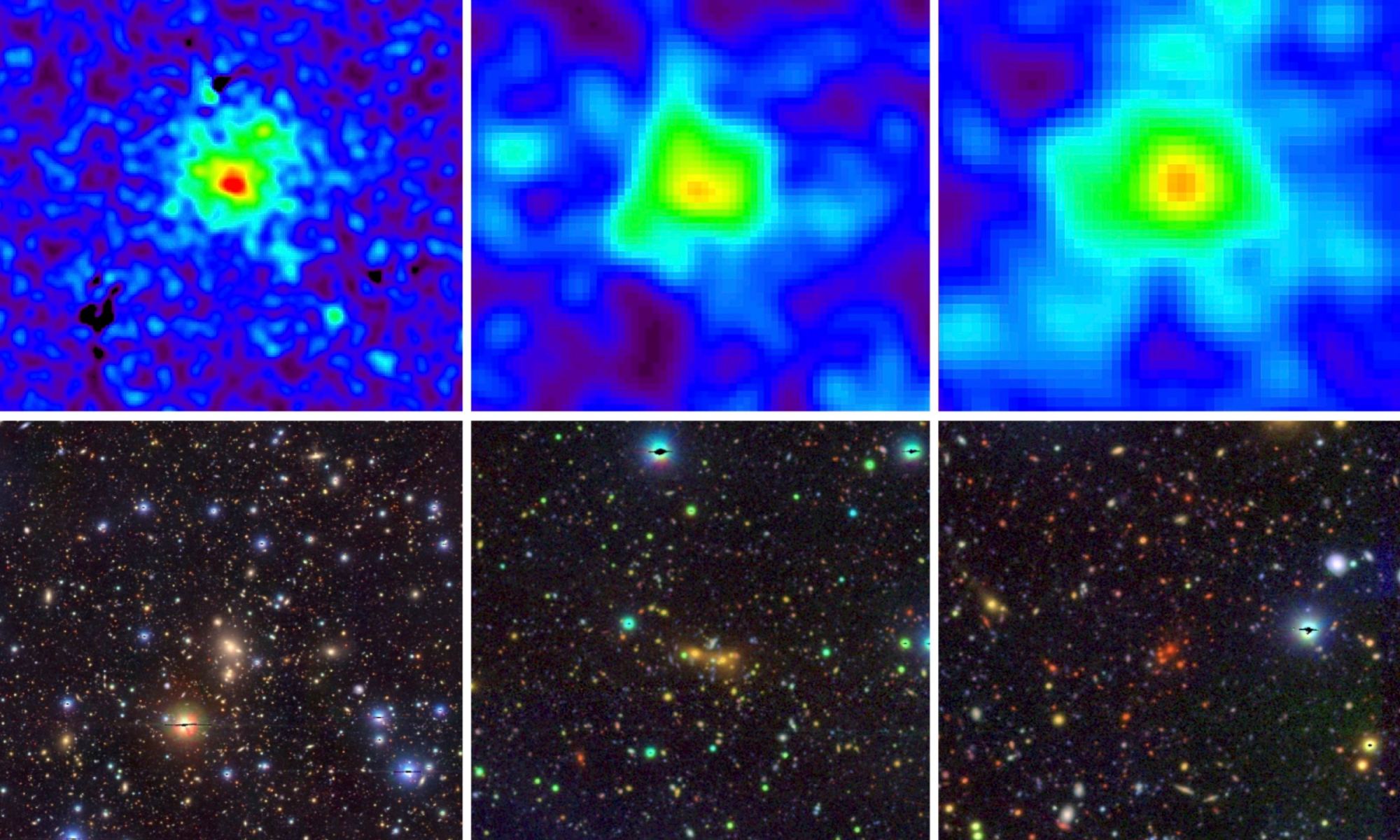The Force is with us, according to cosmologists working to understand a mysterious “something” that’s making the universe expand. Its name? Dark energy. And, it turns out that it’s been present everywhere throughout cosmic history.
Astronomers have known since the 1920s that the universe is expanding. That understanding began with Edwin Hubble’s groundbreaking observation of a Type I supernova in the Andromeda Galaxy. And, astronomy trucked along for many years, using that expansion to measure distances and other parameters in the cosmos. Then, in 1998, something happened. Astronomers discovered that the cosmic expansion is speeding up.
The culprit? This completely not-at-all-understood dark energy force which can’t be seen, but with effects that can be detected. Some explain it as a property of space that causes the universe to expand faster and faster. Others suggest that it’s some kind of new energy fluid or a field that fits throughout space, but has an effect on the expansion of the Universe. It could also be something that doesn’t fit our current theories about gravity, and that a new theory of gravity could account for dark energy’s effects.
There’s no consensus yet about which of these theories is correct. However, its discovery immediately raised a bunch of questions, such as, when did the expansion rate accelerate? Will that change, too? Was it the same rate throughout the universe across all time?

This diagram reveals changes in the rate of expansion since the universe’s birth nearly 15 billion years ago. The more shallow the curve, the faster the rate of expansion. The curve changes noticeably about 7.5 billion years ago when objects in the universe began flying apart at a faster rate. Astronomers theorize that the faster expansion rate is due to a force called “dark energy” that is pulling galaxies apart. Credit: NASA/STSci/Ann Feild
Dark Energy, eROSITA, and Galaxy Clusters
To answer those, a group of researchers used something called eROSITA to look at a specific subset of galaxy clusters across time. eROSITA is the main X-ray-sensitive instrument aboard the Spectrum-ROENTGEN-GAMMA (SRG) mission launched in 2019. (Currently, it is shut down due to the ongoing conflict between Russia and Ukraine.) One of its jobs is to do a complete all-sky survey in the medium energy X-ray range (up to 10 keV). The data it returns should help probe the nature and ubiquity of dark energy by studying up to 100,000 galaxy clusters and the material between them. It also studies obscured black holes in galaxies and looks at X-ray sources ranging from young stars and supernova remnants to X-ray binaries.
Astronomers I-Non Chieu of Taiwan’s National Cheng Kung University and Matthias Klein, Sebastian Bocquet, and Joseph Mohr at Ludwig Maximilians-Universitat in Munich used eROSITA Final Equatorial Depth Survey (eFEDS) data taken before the shutdown to characterize about 500 low-mass galaxy clusters. It’s one of the largest such samples and it “saw” them over the past ten billion years. That’s around 3/4 of the age of the Universe.
Combining Data to Measure Distant Galaxy Clusters
The team coupled the eFEDS data with optical data taken using the Hyper Suprime-Cam instrument at the Subaru Telescope in Hawai’i. They used the combined data to characterize the galaxy clusters in eFEDS and measure their masses using weak gravitational lensing. The combo enabled the first cosmological study using galaxy clusters detected by eROSITA.
Cosmologists have long assumed that dark energy is roughly 68& of the Universe. This new result “ups” that number. Essentially, the team showed that dark energy makes up around 76% of the total energy density in the Universe.
The analysis shows that dark energy’s distribution is also quite uniform in space and constant in time. “Our results also agree well with other independent approaches, such as previous galaxy cluster studies as well as those using weak gravitational lensing and the cosmic microwave background,” said Bocquet.
Galaxy Clusters and Dark Energy
Dark energy is a slippery concept to nail down. Sure, astronomers know it’s there and affecting the Universe. And, they say that it provides a sort of “anti-gravity” that pushes objects away from each other. That also has the effect of slowing down or even stopping the formation of large objects such as galaxy clusters. So, if dark energy has been at work across the universe and throughout time, then it affects where and how such things as galaxy clusters formed.
Knowing that actually gives astronomers a tool they can use to assess this force. “We can learn a great deal about the nature of dark energy by counting the number of galaxy clusters formed in the universe as a function of time—or in the observational world as a function of redshift,” said Klein.
In their paper, the research team points out that the number of galaxy clusters across the universe can be used as another way to probe the nature of dark energy. The eROSITA study is a mini-survey of those clusters. The current work is a “proof of concept” for a method they hope can be applied across larger surveys of galaxy clusters to further study the effects of dark energy across time and space.
For More Information
Cosmology: On the Trail of a Mysterious Force in Space
Cosmological Constraints from Galaxy Clusters and Groups in the eROSITA Final Equatorial Depth Survey
What is Dark Energy


Mind that mechanisms and interpretations of the scale factor change of FLRW models of the universe vary, and that specifically for dark energy the terms “anti-gravity” [in a theory of always positive gravitational charge and corresponding space curvature!] and “pressure” are among the most misleading.
The label scale factor implies the general relativistic distances between galaxies vary without specifying pressures of a gas of particles, and the label dark energy implies that the dark energy era dominating scale factor changing mechanism cause is interpreted as an energy.